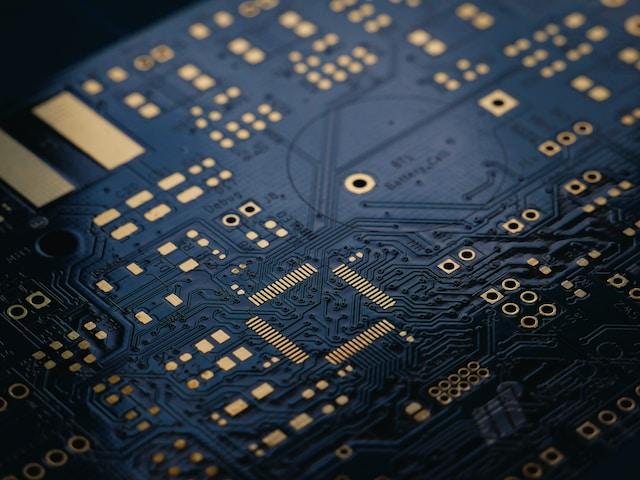Elevate Your Designs with 10-Layer PCB Excellence
Designing high-performance electronics requires careful consideration and expertise in printed circuit board (PCB) design. One crucial aspect that significantly impacts the performance and functionality of electronic devices is the PCB architecture, particularly the number of layers utilized. In this article, we delve into the realm of 10-layer PCB design excellence, exploring the benefits, considerations, and strategies involved in elevating designs to the next level. From optimizing signal integrity to implementing advanced routing techniques, we uncover the intricacies of multi-layer PCBs and provide insights into achieving superior results in electronic design projects.
Introduction to 10-Layer PCB Design
The introduction of 10 Layer PCB represents a significant leap forward in technology. Unlike traditional single or double-layer boards, 10-layer PCBs offer a multi-tiered structure that allows for intricate circuitry and enhanced signal integrity.
These advanced PCBs are designed to accommodate the growing demand for compact, high-density electronic devices. The additional layers provide greater flexibility in routing and reduce signal interference, making them ideal for applications in industries such as telecommunications, aerospace, and high-performance computing.
Exploring the Evolution of PCB Technology
From humble single-layer boards to complex 10-layer marvels, PCB technology has come a long way, offering designers more possibilities than ever before.
Overview of Multi-Layer PCB Architecture
Multi-layer PCBs stack multiple layers of copper and insulating material to provide a fertile ground for intricate designs and advanced functionalities.
Understanding the Benefits of Multi-Layer PCBs
Enhanced Signal Integrity and Reduced EMI
With more layers to work with, signal paths can be optimized, reducing noise and electromagnetic interference for a smoother performance.
Improved Power Delivery and Thermal Performance
Multi-layer PCBs excel at managing power distribution and dissipating heat efficiently, crucial for high-performance applications.
Key Considerations for Designing 10-Layer PCBs
Layer Stackup Planning and Configuration
Crafting a solid layer stackup is crucial, ensuring proper signal flow, power distribution, and thermal management throughout the board.
Component Placement and Routing Strategies
Thoughtful component placement and meticulous routing can make or break a 10-layer PCB design, affecting everything from signal integrity to manufacturability.
Optimizing Signal Integrity in Complex PCB Designs
Signal Integrity Challenges in High-Speed Designs
High-speed signals demand extra attention to prevent issues like reflections, crosstalk, and impedance mismatches that can degrade performance.
Tools and Techniques for Signal Integrity Analysis
Utilizing simulation tools and analysis techniques can help designers predict and mitigate signal integrity issues before they become real-world headaches.
Implementing Power Distribution Strategies
Power Delivery Network (PDN) Design Best Practices
When it comes to powering up your PCB, having a solid Power Delivery Network (PDN) design is key. Think of it as the circulatory system of your board, ensuring all components receive the right amount of power at the right time. Implementing best practices like proper power plane distribution and minimizing loop inductance can help prevent voltage droops and ensure stable operation.
Decoupling Capacitor Placement and Sizing
Decoupling capacitors are like the unsung heroes of PCB design, quietly stabilizing voltage levels and reducing electrical noise. Placing them strategically near power pins and sizing them correctly based on frequency requirements can make a big difference in the performance of your board. Remember, when it comes to decoupling capacitors, size does matter!
Consumer Electronics Application
In consumer electronics, 10-layer PCBs enable compact designs without compromising performance. From smartphones to wearables, these boards provide the necessary connectivity and functionality in a sleek package.
Telecommunications Industry Implementation
The telecommunications industry relies on 10-layer PCBs for high-speed data transmission and reliable network infrastructure. From routers to satellite communication systems, these boards play a crucial role in maintaining seamless connectivity.
Thermal Management Techniques for 10-Layer PCBs
Understanding Thermal Considerations in Multi-Layer PCBs
Things can heat up quickly in the world of PCBs, especially when you have multiple layers packed with components. Understanding thermal considerations like thermal resistance, heat dissipation paths, and component placement can help you design a board that stays cool under pressure.
Heat Dissipation Strategies and Thermal Relief Techniques
To prevent your PCB from turning into a mini volcano, incorporating heat dissipation strategies like thermal vias, copper pours, and thermal relief pads can help route heat away from critical components. These techniques can be a lifesaver when dealing with hot-headed components.
Advanced Routing and Layer Stackup Guidelines
High-Speed Signal Routing Guidelines
When signals need to travel at warp speed across your PCB, proper routing is essential. Following guidelines for controlled impedance routing, signal length matching, and minimizing crosstalk can help ensure signal integrity and prevent data loss in high-speed applications.
Impedance Control and Differential Pair Routing
Impedance control isn't just a fancy term – it's crucial for maintaining signal integrity in your PCB. Properly routing differential pairs with matched lengths and controlled impedance can help reduce signal reflections and ensure reliable communication between components.
Conclusion
In conclusion, mastering the intricacies of 10-layer PCB design can truly elevate the quality and performance of electronic devices. By understanding the benefits, key considerations, and advanced strategies associated with multi-layer PCBs, designers can unlock a world of possibilities in creating cutting-edge electronics. With a focus on signal integrity, power distribution, thermal management, and routing techniques, achieving excellence in 10-layer PCB design is within reach for those willing to delve into the complexities of modern PCB architecture.

